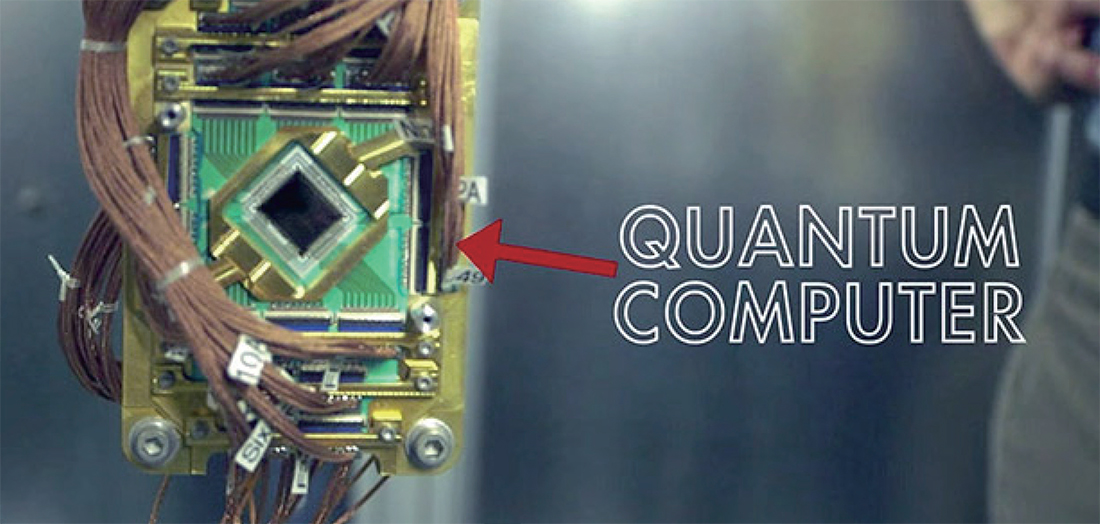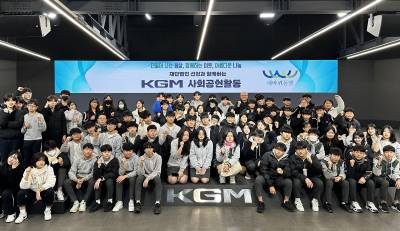- (Free MP3) 떠오르는 양자컴퓨터 시대

THIS Q’S FOR YOU
Quantum computers have long been theoretically possible but a kind of futuristic fantasy, like Interstellar-style wormhole travel or zero-calorie Hershey Bars. I first wrote in the 1990s about the quest for one. Now breakthroughs are coming faster, and scientists say we’re 15 to 20 years away from fully functional, programmable quantum computers.
This technology will make the microprocessor in your laptop seem as sophisticated as a booger. The silicon-based technology inside today’s computers, which engineers have constantly made faster and cheaper for five decades, is running out of ways to get better. Quantum computers will herald, well, a quantum leap, like riding a horse one day and getting into a fighter jet the next. These machines will be millions of times more powerful than today’s fastest supercomputers, solving problems that now elude solving, like dead-on accurate weather prediction or modeling protein molecules for medical research.
A quantum computer could also create indestructible encryption, and unlock any existing computer security as easily as you unzip your fly. We’re entering an era of cyberwar, so imagine how power might shift if one country gets the ability to invade any other country’s computer systems while putting up the ultimate computer defenses. That’s a major reason nations are pouring money into this research. The U.K., China, Russia, Australia, Netherlands and other countries are in the game. In the U.S., the CIA, National Security Agency and Pentagon are all funding research, while Los Alamos National Laboratory operates one of the most significant quantum computer labs.
Negotiations to keep nuclear weapons from Iran are certainly critical, but if you play out the promise of quantum computing, an American machine could bust into Iranian systems and shut down all that country’s nuclear activity in an instant. It’s like a game of rock-paper-scissors: Nukes might be the world’s version of a rock, but quantum computers would be paper, winning every time.
And yet, quantum computing research isn’t self-contained and secretive in the manner of the Los Alamos atomic bomb work during World War II. Some of it is academic work at universities such as Massachusetts Institute of Technology, with findings shared in scientific papers. Technology companies are working on this too, since these things have the potential to be business nukes. IBM, Google and Microsoft all fund research. Imagine if Google gets one before Microsoft. That pesky Bing could wind up vaporized. Google has a Quantum Artificial Intelligence unit working with the University of California, Santa Barbara, with a goal of developing a quantum machine that can learn.
Meanwhile, a Canadian startup, D-Wave Systems, is partially funded by Amazon CEO Jeff Bezos and the CIA. The very secretive and often controversial company is already marketing a hybrid machine that seems to be a traditional silicon computer with some sort of quantum turbo thruster.
There’s no telling yet how this technology will emerge, or whether it will be hoarded by a few nations (like nukes) or spread around the globe (like computers). “There’s a healthy mix of cooperation and competition,” IBM quantum computing scientist Jerry Chow says. “But there’s starting to be more competition.”
Keep in mind that this technology is really hard, and really, really weird. A quantum computer makes calculations using the spin of special atoms, called qubits, and it relies on bizarre quantum physics properties like multiple parallel universes. Quantum computing is so fast because it calculates all possible answers at the same time. To borrow a metaphor from D-Wave CEO Vern Brownell, let’s say you had to find an X written on one page among the 37 million books in the Library of Congress. A typical computer today would look at every page, one at a time very quickly, but still in a serial process. A quantum computer could look at every page at the same time as if it were splitting the task into a billion parallel universes, finding the answer, then coming back to ours to show us where that X is.
Scientists have managed to get a few qubits to do calculations in labs, but we are far from getting a stable, programmable, fully quantum machine. On April 29, IBM announced what it says is a significant advance. It is a way to detect and measure the two types of quantum errors, called bit-flip and phase-flip, at the same time. That sounds esoteric to most of us, but it will help with a peculiar problem that vexes researchers: The very act of looking at a qubit to get its answer can make the qubit change its answer. So some mechanism needs to figure out whether we’re seeing the right answer. Again, this stuff is really weird.
The various labs often disagree on the best way to build a quantum computer, and the art of programming qubits is as big a challenge as making the machine in the first place. Today’s software is based on algorithms, which are linear, one-step-at-a-time calculations. Top mathematicians aren’t yet sure how to write algorithms that calculate everything at the same time. It’s like trying to come up with a recipe for an apple pie in which all the ingredients combine in the pan in the same split second.
As hard as this work seems, scientists have become certain that the first quantum computers are within reach. Expect quantum computing news to keep coming. And it might not be too early to prepare for quantum-era life a couple of decades from now. If you’re already worried that artificial intelligence will take your job, quantum AI will seem terrifying. Your Google self-driving car will be smarter than your whole department.
떠오르는 양자컴퓨터 시대
양자컴퓨터는 오래 전부터 이론적으로만 가능한 일종의 공상과학물이었다. 마치 영화 ‘인터스텔라’에 나오는 웜홀 여행이나 제로칼로리 초컬릿바처럼 말이다. 내가 처음 양자컴퓨터에 대한 글을 쓴 건 1990년대였다. 지금은 획기적인 기술이 점점 빨리 개발된다. 과학자들은 우리가 완전한 양자컴퓨터를 손에 넣기까지 15~20년 정도 남았다고 말한다.
이 기술은 우리 노트북 속 마이크로프로세서를 아주 무능해 보이게 만든다. 공학자들은 지난 50년 동안 우리 컴퓨터 속의 실리콘 기술을 끊임없이 더 빠르고 싸게 만들었다. 이제 더 나아질 여지가 없는 상황이다. 양자컴퓨터는 획기적인 전환을 이뤄낼 것이다. 마치 말을 타고 다니다가 어느 날 갑자기 전투기를 타게 되는 것과 같다. 현재 가장 빠른 슈퍼컴퓨터보다 수백 배는 빠를 뿐 아니라 정확한 일기예보, 의학 연구용 단백질 분자 모델링 등 현재는 해결 불가능한 문제도 풀 수 있다.
또 한 가지 장점은 파괴 불가능한 암호를 만들어내며 현존하는 그 어떤 컴퓨터 보안도 쉽게 해제할 수 있다. 오늘날 세계는 사이버 전쟁의 시대에 접어들었다. 한 국가가 강력한 보안을 갖추는 동시에 다른 국가의 보안 시스템에 침투하는 능력을 갖춘다면 어떻게 될지 상상해 보라. 세계 주요 국가들이 양자컴퓨터 연구에 돈을 쏟아 붓는 이유다. 영국, 중국, 러시아, 호주, 네덜란드 등 수많은 국가가 양자컴퓨터 개발에 몰두 중이다. 미국에선 중앙정보부, 국가보안국, 국방성이 모두 양자컴퓨터 연구를 후원하며 맨해튼 프로젝트를 맡았던 로스앨러모스 국립연구소가 이 분야에서 가장 눈에 띄는 연구를 진행하고 있다.
이란 핵 협상도 물론 중요하다. 그러나 만약 양자컴퓨터를 기대만큼 개발한다면 이란 컴퓨터 시스템에 들어가 모든 핵 활동을 일시에 정지시킬 수 있다. 마치 가위바위보 게임과 같다. 핵이 바위라면 양자컴퓨터는 보다. 언제나 승리한다.
그럼에도 양자컴퓨터 연구는 제2차 세계대전 로스앨러모스 국립연구소의 핵폭탄 연구처럼 독자적이거나 비밀스럽지 않다. 연구 일부는 매사추세드공과대학 같은 캠퍼스에서 이뤄진다. 연구 성과도 서로 공유한다. IT 업체도 빠지지 않는다. 양자컴퓨터는 IT 업계의 핵폭탄이 될 잠재력이 있기 때문이다. IBM, 구글, 마이크로소프트(MS) 모두가 양자컴퓨터 연구에 투자한다. 만약 구글이 MS보다 먼저 성공한다면 MS의 성가신 검색엔진 빙은 순식간에 자취를 감출 것이다. 구글은 캘리포니아대학과 함께 양자인공지능 연구부서를 운영한다. 학습 가능한 양자기계 개발이 목표다.
그 사이 아마존 CEO 제프 베조스와 미국 중앙정보국(CIA)은 캐나다 스타트업 D웨이브 시스템즈에 투자한다. 매우 비밀스럽고 때로는 논란을 일으키는 이 업체는 이미 하이브리드 양자 기계를 홍보한다. 양자추진장치를 갖춘 실리콘 컴퓨터로 보인다.
이 기술이 완성되면 어떤 형태를 띌지, 핵무기처럼 일부 국가만 갖추게 될지 아니면 컴퓨터처럼 전 세계로 퍼질지는 아직 아무도 모른다. “경쟁과 협력이 적절한 조화를 이룬다”고 제리 초우 IBM 양자컴퓨터 연구자는 말했다. “그러나 점점 경쟁쪽으로 기울고 있다.”
이 기술은 아주 이해가 어렵고 괴이하다는 점을 기억해야 한다. 양자컴퓨터는 큐빗이라 불리는 특수한 원자를 회전시켜서 연산한다. 게다가 다중평행우주 같은 기이한 양자물리학적 특성에 의존한다. 양자컴퓨터는 동시에 모든 가능한 답을 계산하기 때문에 연산이 매우 빠르다. D웨이브 시스템즈 CEO 베른 브라우넬은 이렇게 설명한다. 국회도서관에서 장서 3700만 권 중 어느 한 페이지에 적힌 글자 X를 찾아야 한다고 해보자. 양자컴퓨터는 모든 페이지를 동시에 들여다보고 X를 찾아 우리에게 보여준다. 마치 10억 평행 우주 속에서 동시에 일하듯 말이다.
과학자들은 큐빗 몇 개를 이용해서 연산하는 데까진 성공했다. 안정적이고 프로그래밍 가능한 양자 기계까지는 갈 길이 멀다. 지난 4월 29일 IBM은 스스로 중대한 진전이라 부른 사항을 발표했다. 두 종류의 양자 오류를 동시에 탐지하고 측정하는 방법을 밝혀냈다는 것이다. 대다수 사람은 이해하기 어려운 말이지만, 이 방법은 연구자들을 괴롭히던 고질적 문제 하나를 해결하는 데 도움이 된다. 큐빗을 관찰하는 행위 자체가 큐빗이 답을 바꾸도록 만든다. 우리가 올바른 답을 보고 있는지 알아낼 메커니즘이 필요하다. 다시 한 번 말하지만 아주 괴이한 기술이다.
여러 연구소는 종종 최선의 양자컴퓨터를 만드는 방식을 놓고 논쟁을 벌인다. 큐빗을 프로그래밍하는 방식 역시 기계를 만드는 것 못지 않게 어려운 과제다. 오늘날 소프트웨어는 한 번에 한 가지 일밖에 처리하지 못하는 선형적 알고리즘에 기초를 둔다. 가장 뛰어난 수학자들조차 동시에 모든 것을 연산하는 알고리즘을 어떻게 써야 할지 알지 못한다. 모든 재료를 동시에 팬에 넣고서 애플파이를 만들려고 하는 셈이다.
여러 난제에도 불구하고 과학자들은 첫 양자컴퓨터의 탄생이 머지 않았다고 본다. 가까운 미래에 등장할 뉴스를 기대하시라. 향후 수십년 사이엔 양자컴퓨터의 시대가 도래하지 않을지 모른다. 인공지능에 직업을 빼앗길까 두려운 사람에게 양자 인공지능은 공포 그 자체일 만도 하다. 구글 자율주행 차는 우리 중 어느 누구보다도 더 똑똑할 것이다.
- 번역 이기준
ⓒ이코노미스트(https://economist.co.kr) '내일을 위한 경제뉴스 이코노미스트' 무단 전재 및 재배포 금지










![갓 잡은 갈치를 입속에... 현대판 ‘나는 자연인이다’ 준아 [김지혜의 ★튜브]](https://image.isplus.com/data/isp/image/2025/11/21/isp20251121000010.400.0.jpg)
![딱 1분… 숏폼 드라마계 다크호스 ‘야자캠프’를 아시나요 [김지혜의 ★튜브]](https://image.isplus.com/data/isp/image/2025/11/09/isp20251109000035.400.0.jpg)



당신이 좋아할 만한 기사
브랜드 미디어
브랜드 미디어
“월러, 트럼프 연준의장 면접서 ‘긍정 평가’…후보군 4명으로 압축”
세상을 올바르게,세상을 따뜻하게일간스포츠
팜이데일리
이데일리
"구체적 제안 전까진 미국 안 간다"던 송성문의 미국행, SD 3년 1300만 달러 계약 임박
대한민국 스포츠·연예의 살아있는 역사 일간스포츠일간스포츠
일간스포츠
일간스포츠
우에다, 내년 점진적 금리인상 시사…"실질금리 여전히 낮아"
세상을 올바르게,세상을 따뜻하게이데일리
이데일리
이데일리
"브랜드 못지 않게 구조도 중요"…달라지는 F&B 딜 성사 기준
성공 투자의 동반자마켓인
마켓인
마켓인
"미국·유럽 빅파마도 붙었다"… 제테마 톡신 기술수출 어디까지 왔나
바이오 성공 투자, 1%를 위한 길라잡이팜이데일리
팜이데일리
팜이데일리